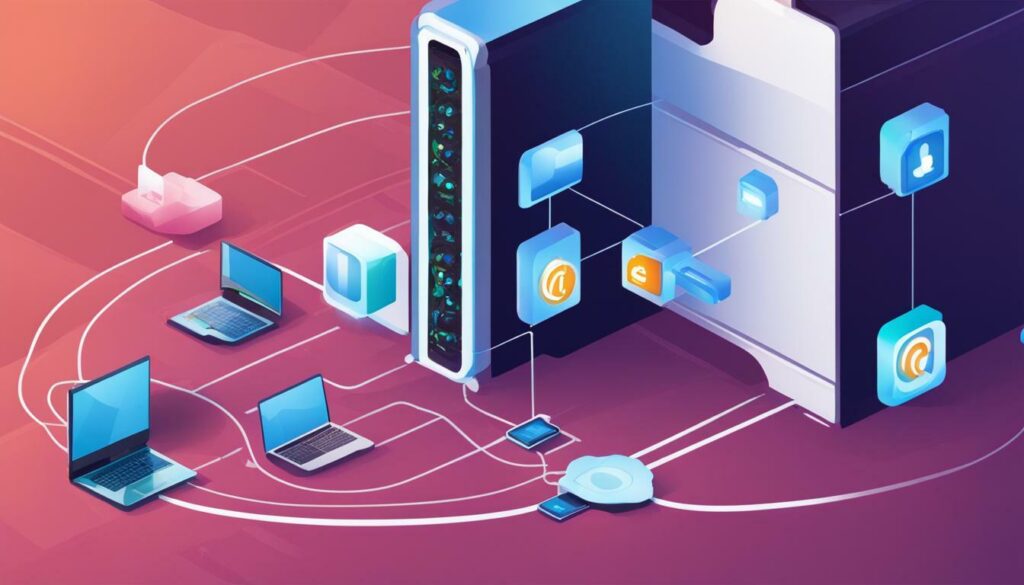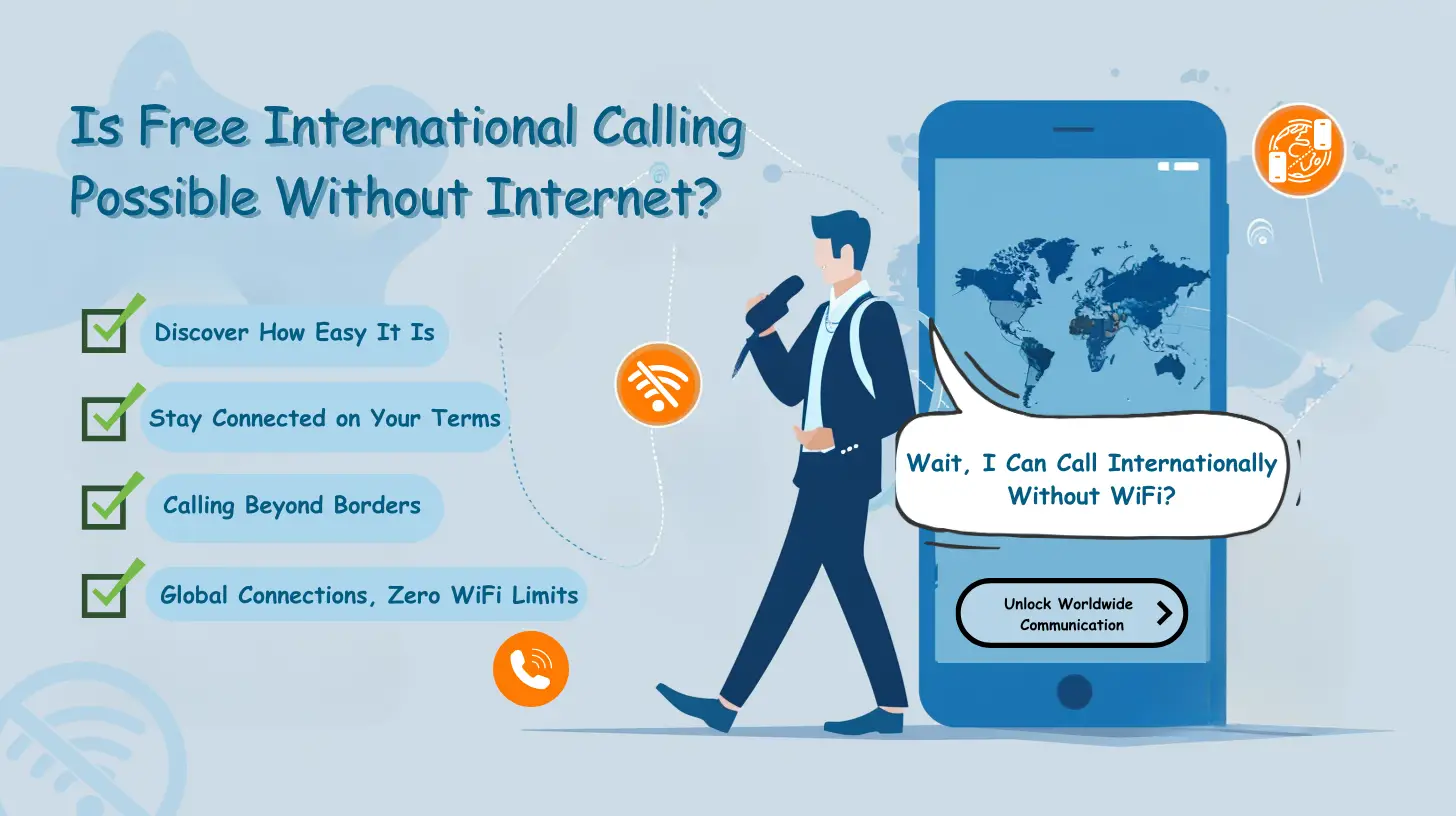SIP trunking is a revolutionary technology that has transformed the way businesses communicate, offering numerous benefits and possibilities for modern telecommunication systems. Rather than relying on traditional phone lines, SIP Trunking Meaning enables businesses to make and receive telephone calls using an Internet connection. It utilizes the Session Initiation Protocol (SIP) to initiate, maintain, and terminate real-time sessions.
With SIP trunking, businesses can enjoy a range of advantages. It offers cost savings by eliminating the need for multiple phone lines and reducing long-distance charges. Scalability is another key benefit, allowing businesses to easily add or remove channels as their communication needs change. Flexibility is also enhanced, as SIP trunking allows businesses to integrate their telecommunication system with other business applications, such as CRM software or call center systems.
Reliability is a crucial aspect of SIP trunking, as it ensures consistent call quality and uptime. SIP trunking providers often offer real-time analytics, allowing businesses to track call volumes and make data-driven decisions to optimize their operations. Security is also prioritized, with encryption protocols in place to protect sensitive communication.
Compared to traditional phone lines, SIP trunking offers a host of advantages. It provides geographic flexibility, allowing businesses to have a local presence in multiple locations without the need for physical infrastructure. SIP trunking also future-proofs businesses, enabling them to easily adopt newer technologies and services as they become available.
When selecting a SIP trunking provider, there are several key factors to consider. Security should be a top priority, with encryption and other measures in place to protect against unauthorized access. Real-time analytics can provide valuable insights into call patterns and help optimize communication processes. Disaster recovery capabilities are also important, ensuring business continuity in the event of a failure.
For businesses aiming to expand internationally or cater to a global customer base, international coverage is a crucial consideration. A strong service level agreement (SLA) is essential, as it outlines the performance and reliability guarantees from the provider. Price competitiveness, customer support quality, and technical expertise are also important elements to evaluate.
SIP trunking is not limited to specific industries or sizes of businesses. It offers benefits to any business with an IP PBX (private branch exchange), including cost savings, geographic flexibility, future preparedness, control, and enabling unified communications strategies. The installation process is virtual, making it quick and easy to set up and configure.
When choosing a SIP trunk provider, businesses should consider their specific requirements, such as the number of concurrent calls, the number of minutes needed, and whether they require new numbers or the porting of existing numbers. It’s also important to evaluate the provider’s reputation, customer reviews, and overall stability.
Overall, SIP trunking is a game-changer in the world of business communication, offering a reliable, flexible, and cost-effective solution for modern telecommunication needs.
- SIP trunking enables businesses to make and receive telephone calls using an Internet connection.
- It offers cost savings, scalability, flexibility, reliability, and integration with other business systems.
- SIP trunking allows businesses to track call volumes and optimize operations.
- When selecting a provider, consider factors such as security, real-time analytics, disaster recovery, international coverage, and a strong SLA.
- SIP trunking is a virtual installation that can be set up quickly and easily.
SIP Trunking Meaning:
SIP trunking is a method of transmitting voice and multimedia communication over the internet, using the Session Initiation Protocol (SIP) to establish and maintain real-time sessions. Instead of relying on traditional phone lines, SIP trunking enables businesses to make and receive telephone calls using an internet connection. This innovative technology has revolutionized the way businesses communicate, offering numerous benefits and advantages.
With SIP trunking, businesses can enjoy cost savings, scalability, flexibility, reliability, and integration with other business systems. It allows organizations to track call volumes and optimize their operations to enhance productivity. By utilizing an IP-enabled PBX and the SIP protocol, SIP trunking simplifies the management of calls over the internet, providing high-quality wholesale voice calls and ensuring security through encryption.
Compared to traditional phone lines, SIP trunking offers more advantages, making it an attractive choice for businesses. It provides cost savings, geographic flexibility, future preparedness, control, and unified communications. Implementing SIP trunking is a virtual installation that can be set up quickly and easily, further adding to its convenience and efficiency. When selecting a SIP trunk provider, businesses should consider factors such as the number of concurrent calls, required minutes, and the option to port existing numbers.
Key factors to consider in a SIP trunking provider include security, real-time analytics, disaster recovery, interoperability, international coverage, and a strong service level agreement. Price, security, resilience, and uptime are all crucial aspects to evaluate. By choosing a reliable and suitable SIP trunking provider, businesses can ensure seamless communication and maximize the benefits of this advanced technology.

SIP trunking works by connecting an IP-enabled PBX system to the internet, allowing businesses to make and receive phone calls using their internet connection. Instead of relying on traditional phone lines, SIP trunking utilizes the Session Initiation Protocol (SIP) to initiate, maintain, and terminate real-time communication sessions.
When a call is placed, the SIP trunk sends the call signaling to the service provider, who then routes it to the intended recipient. This allows businesses to establish voice connections over the internet, bypassing the need for physical phone lines and traditional telephone networks.
One of the key benefits of SIP trunking is its ability to handle multiple simultaneous calls, enabling businesses to scale their communication capabilities according to their needs. It also offers flexibility, as it can be easily integrated with existing business systems, such as customer relationship management (CRM) software or contact center platforms.
To ensure security and protect sensitive information, SIP trunking uses encryption protocols to safeguard voice communications. This ensures that conversations remain confidential and protected from unauthorized access.
| Advantages of SIP Trunking |
|---|
| Cost savings |
| Scalability |
| Flexibility |
| Reliability |
| Integration with other business systems |
Key Advantages of SIP Trunking
- Cost savings: SIP trunking eliminates the need for traditional phone lines, reducing telecommunications costs significantly.
- Scalability: Businesses can easily add or remove channels as their communication needs change, allowing for seamless scalability.
- Flexibility: SIP trunking can be used with any IP-enabled PBX system, providing geographic flexibility and the ability to connect remote offices or employees.
- Reliability: SIP trunking offers high-quality voice calls and service uptime, ensuring that businesses can rely on their communication capabilities.
- Integration with other business systems: SIP trunking can be seamlessly integrated with other business systems, such as CRM software or contact center platforms, enhancing overall efficiency and productivity.
By leveraging the power of SIP trunking, businesses can optimize their communication processes, track call volumes, and streamline operations. It is a cost-effective and future-ready solution that offers control, unified communication strategies, and the ability to adapt to changing business needs.

SIP trunking brings a myriad of advantages to businesses, providing cost-effective communication solutions and enhanced flexibility for modern telecommunication needs. Let’s explore some of the key benefits that SIP trunking offers:
- Cost Savings: By leveraging an internet connection for making and receiving calls, businesses can significantly reduce their communication expenses. SIP trunking eliminates the need for traditional phone lines and the associated line rental and long-distance charges.
- Scalability: SIP trunking allows businesses to easily scale their communication capabilities up or down based on their evolving needs. They can quickly add or remove channels as required, ensuring efficient resource allocation.
- Flexibility: With SIP trunking, organizations can seamlessly connect multiple communication platforms, such as IP PBX systems, softphones, and mobile devices. This enables employees to communicate from anywhere, using any device, enhancing remote work capabilities.
- Reliability: SIP trunking offers high-quality voice calls with minimal downtime. It provides businesses with redundancy options, such as failover and load balancing, ensuring continuous communication even in the event of network disruptions.
- Integration: SIP trunking seamlessly integrates with other business systems and applications, such as customer relationship management (CRM) software and unified communications platforms. This enables streamlined communication processes and improved productivity.
Table: Cost Comparison: Traditional Phone Lines vs. SIP Trunking
| Cost Factors | Traditional Phone Lines | SIP Trunking |
|---|---|---|
| Line Rental | Included in the package | Not required |
| Long-Distance Charges | Expensive | Affordable or included based on the provider |
| Flexibility | Limited | Highly flexible, easily scalable |
| Integration | Challenging | Seamless integration with other systems |
| Reliability | Dependent on physical infrastructure | Highly reliable with built-in redundancy options |
SIP trunking not only offers immediate benefits but also future-proofs businesses by leveraging the latest telecommunication technologies. It empowers organizations with geographic flexibility, allowing them to establish local presence in different regions without physical offices. Furthermore, SIP trunking enables businesses to track call volumes, analyze communication metrics, and optimize operations for improved efficiency.
In conclusion, the advantages of SIP trunking are undeniable. It offers cost savings, scalability, flexibility, reliability, and integration capabilities that can transform telecommunication systems for businesses of all sizes. By selecting a reputable SIP trunking provider that prioritizes security, real-time analytics, disaster recovery, interoperability, and international coverage, organizations can harness the full potential of SIP trunking and reap its numerous benefits.
SIP Trunking vs Traditional Phone Lines
When pitted against traditional phone lines, SIP trunking emerges as a more versatile and cost-effective alternative, offering greater features and functionality. Unlike traditional phone lines that rely on physical infrastructure, SIP trunking utilizes an internet connection to make and receive telephone calls. This digital transformation allows businesses to harness the power of the Session Initiation Protocol (SIP) to initiate, maintain, and terminate real-time sessions with ease.
One of the key advantages of SIP trunking is its scalability. Unlike traditional phone lines that require physical lines to be installed and configured, SIP trunking offers flexibility in adding or removing channels as per business needs. This scalability ensures that businesses have the capacity to handle fluctuating call volumes efficiently, optimizing their operations and improving customer service.
SIP trunking also offers enhanced integration capabilities. By leveraging SIP technology, businesses can seamlessly integrate their telecommunication system with other business systems, such as CRM software, call center applications, and unified communication platforms. This integration enables streamlined communication processes, increasing productivity and efficiency.
Another critical aspect where SIP trunking surpasses traditional phone lines is security. SIP trunking employs encryption protocols to safeguard communication channels, ensuring the confidentiality and integrity of voice calls. Businesses can have peace of mind knowing that their sensitive information and conversations are protected from unauthorized access.
In summary, SIP trunking provides businesses with numerous advantages over traditional phone lines. It offers cost savings, scalability, flexibility, reliability, and enhanced integration capabilities. By leveraging SIP technology, businesses can optimize their operations, enhance their security measures, and achieve unified communication strategies. When choosing a SIP trunking provider, it is crucial to consider factors such as security, real-time analytics, disaster recovery, interoperability, international coverage, and a strong service level agreement. Embracing SIP trunking is a strategic move for businesses to stay ahead in the digital age and unlock the full potential of their communication systems.

Choosing the right SIP trunking provider is crucial for ensuring a seamless and secure telecommunication experience, with factors such as reliability, security, and support playing key roles. When selecting a provider, businesses should consider several factors to ensure they meet their specific needs and requirements.
Security:
One of the primary concerns when choosing a SIP trunking provider is security. Businesses need to ensure that their communication channels are protected from unauthorized access and potential threats. Look for a provider that offers encryption protocols to keep calls and data secure.
Real-time Analytics:
Getting insights into call data and patterns is essential for businesses to optimize their operations. Choose a SIP trunking provider that offers real-time analytics, allowing you to track call volumes, identify peak times, and analyze call quality. This data can help businesses make informed decisions and improve their overall communication strategy.
Disaster Recovery:
No business wants to experience communication downtime in the event of a disaster or system failure. A reliable SIP trunking provider should have robust disaster recovery measures in place to ensure that communication services remain operational even during challenging times. Look for providers that offer redundancy options and have multiple data centers for effective disaster recovery.
Interoperability and International Coverage:
If your business operates globally or has international communication needs, it is vital to choose a SIP trunking provider that offers interoperability and international coverage. Ensure that the provider can seamlessly connect with your existing systems and has the capability to handle international calls without any issues.
Service Level Agreement:
A strong service level agreement (SLA) is essential for businesses relying on SIP trunking services. The SLA outlines the provider’s commitments regarding uptime, response times, and support. Make sure to carefully review the SLA and ensure that it aligns with your business needs and expectations.
By considering these key factors when choosing a SIP trunking provider, businesses can make an informed decision and ensure a smooth transition to SIP trunking services. Remember that each business has unique requirements, so take the time to evaluate providers and choose the one that best meets your specific needs.

| Factors to Consider | Description |
|---|---|
| Security | Choose a provider that offers encryption protocols to keep calls and data secure. |
| Real-time Analytics | Look for a provider that offers real-time analytics to track call volumes and analyze call quality. |
| Disaster Recovery | Ensure the provider has robust disaster recovery measures in place to minimize communication downtime. |
| Interoperability and International Coverage | If you have global operations, choose a provider that offers seamless integration and international calling capabilities. |
| Service Level Agreement | Review the provider’s SLA to ensure it aligns with your business’s needs and expectations. |
SIP Trunking for Business Operations Optimization
SIP trunking goes beyond just enabling voice calls over the internet; it empowers businesses to analyze call volumes, improve customer service, and streamline operational efficiency. With the ability to track call volumes in real-time, businesses gain valuable insights into their communication patterns and can make data-driven decisions to optimize their operations.
By understanding call volumes, businesses can identify peak times and allocate resources accordingly, ensuring that customer calls are promptly answered. This leads to improved customer service and satisfaction, as customers experience reduced wait times and faster issue resolution.
In addition, SIP trunking allows businesses to streamline their communication processes. Instead of managing multiple communication channels separately, SIP trunking integrates voice calls, messaging, and video conferencing into a unified platform. This centralized approach simplifies communication and reduces the complexity of managing multiple systems.

| Benefits of SIP Trunking for Business Operations Optimization |
|---|
| 1. Enhanced productivity and efficiency |
| 2. Improved customer service and satisfaction |
| 3. Streamlined communication processes |
| 4. Real-time call volume tracking |
Furthermore, SIP trunking offers businesses the flexibility to scale their communication infrastructure as needed. Whether the business expands to multiple locations or experiences seasonal variations in call volumes, SIP trunking can easily accommodate these changes. This scalability ensures businesses can meet their communication needs without investing in costly and complex hardware.
In conclusion, SIP trunking not only enables voice calls over the internet but also empowers businesses to optimize their operations. By tracking call volumes, businesses can improve customer service, streamline communication processes, and make informed decisions to enhance efficiency. With its scalability and flexibility, SIP trunking is a valuable tool for businesses looking to optimize their communication infrastructure.
The Importance of Security in SIP Trunking
With the increasing reliance on digital communication, ensuring the security and privacy of SIP trunking connections is of paramount importance for businesses. SIP trunking enables organizations to transmit voice, video, and other multimedia sessions over the internet, making it vulnerable to potential threats and security breaches. Implementing robust security measures is crucial to protecting sensitive data and maintaining the integrity of communication channels.
One of the key security measures in SIP trunking is the use of encryption protocols. Encryption helps safeguard communication by converting the contents of a message into a code that can only be deciphered by authorized parties. By encrypting SIP trunking traffic, businesses can enhance the confidentiality and integrity of their calls, mitigating the risk of interception or eavesdropping.
In addition to encryption, businesses should also consider implementing other security practices, such as strong authentication mechanisms, network segmentation, and regular security audits. These measures help mitigate the risk of unauthorized access, network intrusions, and data breaches. It is essential to work with a SIP trunking provider that prioritizes security and offers comprehensive security features to protect against evolving threats.
| Benefits of Security in SIP Trunking |
|---|
| 1. Protection of sensitive data: encryption and other security measures ensure that confidential information exchanged over SIP trunking connections remains secure and inaccessible to unauthorized individuals. |
| 2. Mitigation of security risks: robust security practices minimize the risk of unauthorized access, network attacks, and disruptions, safeguarding the integrity and availability of communication channels. |
| 3. Compliance with regulations: Implementing security measures in SIP trunking helps businesses meet regulatory requirements and industry standards that govern the protection of sensitive data. |
| 4. Customer trust and reputation: By prioritizing security, businesses demonstrate their commitment to protecting customer data, building trust, and enhancing their reputation in the marketplace. |
The Importance of Regular Security Audits
Regular security audits play a vital role in maintaining the security of SIP trunking connections. These audits involve assessing the overall security posture, identifying vulnerabilities, and implementing necessary remediation measures. By conducting periodic audits, businesses can stay proactive in addressing security weaknesses and staying ahead of emerging threats.
In conclusion, security should be a top priority when implementing SIP trunking solutions. By implementing encryption, strong authentication mechanisms, network segmentation, and regular security audits, businesses can protect their communication channels, maintain the privacy of sensitive data, and mitigate security risks. Choosing a SIP trunking provider that offers robust security features and prioritizes the protection of customer data is essential for businesses looking to harness the benefits of SIP trunking while maintaining a secure communication environment.

By adopting SIP trunking, businesses gain control over their communication infrastructure, enabling seamless integration and collaboration across different communication channels. SIP trunking allows businesses to consolidate their telecommunications services onto a single IP-based connection, eliminating the need for multiple physical phone lines and simplifying network management.
With SIP trunking, businesses can connect their IP-enabled PBX systems to the public switched telephone network (PSTN) through the internet. This enables them to make and receive voice calls, video calls, and instant messages using their existing IP infrastructure. By leveraging SIP trunking, businesses can also extend the functionality of their unified communication platforms, such as voice conferencing, presence management, and unified messaging.
SIP trunking offers businesses geographic flexibility, as it allows them to easily establish local phone numbers in different regions without making physical infrastructure investments. It also provides cost savings by eliminating the need for dedicated phone lines and long-distance charges. With SIP trunking, businesses can easily scale their communication capacity up or down based on their needs, as additional lines can be provisioned virtually.
Benefits of SIP Trunking for Unified Communications
SIP trunking offers several key advantages for businesses looking to enhance their unified communication strategies:
- Increased Efficiency: By integrating voice, video, and data communication into a single platform, businesses can streamline their communication processes and improve overall efficiency.
- Enhanced Collaboration: SIP trunking enables real-time communication and collaboration, allowing teams to work together seamlessly, regardless of their physical location.
- Improved Productivity: With features like presence management and unified messaging, SIP trunking enables employees to easily access and manage their communication channels, leading to increased productivity.
- Scalability: SIP trunking allows businesses to easily scale their communication capacity up or down based on their needs, ensuring they have the necessary resources to support growth.
- Cost Savings: By consolidating their communication services onto a single IP connection, businesses can reduce their telecommunication costs and eliminate the need for expensive infrastructure investments.
With its ability to provide control, flexibility, and cost savings, SIP trunking has become an essential component for businesses looking to optimize their unified communication strategies. By leveraging the power of the internet, businesses can streamline their communication processes, enhance collaboration, and improve overall productivity.
| Factors to Consider when Choosing a SIP Trunk Provider |
|---|
| Price |
| Security |
| Resilience |
| Uptime |

Setting Up SIP Trunking: Quick and Easy Installation
Setting up SIP trunking is a hassle-free process, with virtual installations that can be implemented quickly and easily, saving businesses time and resources. Unlike traditional phone line installations that require physical hardware and on-site technicians, SIP trunking uses an internet connection to establish communication channels. This virtual nature of SIP trunking allows businesses to set up their telecommunication infrastructure without the need for complex equipment or extensive technical expertise.
To get started with SIP trunking, businesses need an IP-enabled PBX (private branch exchange) system and a reliable internet connection. The PBX system acts as the central hub for managing calls, while the internet connection serves as the pathway for transmitting voice data. Once these requirements are in place, the SIP trunking provider will provision the necessary SIP trunks, which act as virtual phone lines.
After the provisioning process, the SIP trunks can be configured within the IP-enabled PBX system. This configuration involves specifying the number of concurrent calls, setting up call routing rules, and integrating with other business systems, such as customer relationship management (CRM) software or call center applications. The entire setup process can typically be completed within a few hours, allowing businesses to rapidly deploy SIP trunking and start reaping its numerous benefits.

SIP trunking offers businesses the flexibility to scale their telecommunication infrastructure as needed. Additional SIP trunks can be provisioned and configured easily, allowing for expansion without the constraints of physical phone lines. This scalability enables businesses to accommodate fluctuating call volumes, seasonal demands, and future growth.
By opting for SIP trunking, businesses can streamline their communication processes, reduce costs, and enhance their overall operational efficiency. The virtual installation and quick setup make it an attractive choice for organizations seeking a modern and adaptable telecommunication solution.
Considerations When Choosing a SIP Trunk Provider
When choosing a SIP trunk provider, it is essential to carefully evaluate your business needs, including the required number of concurrent calls, minute usage, and the ability to port existing numbers. These factors play a crucial role in ensuring that your communication system operates smoothly and efficiently.
First and foremost, consider the number of concurrent calls that your business typically handles. This will determine the capacity of SIP trunks required to support your call volume. By accurately assessing your call traffic, you can avoid bottlenecks and ensure that you have enough channels to handle incoming and outgoing calls effectively.
Another important consideration is minute usage. Evaluate your historical call data to understand your average call duration and volume. This will help you choose a SIP trunk provider that offers suitable pricing plans based on your specific call patterns.
Porting of Existing Numbers
If your business already has established phone numbers that you want to retain, it is vital to select a SIP trunk provider that supports the porting of existing numbers. Porting allows you to seamlessly transfer your existing phone numbers to your new SIP trunk provider, ensuring uninterrupted service and maintaining continuity for your customers.
| Considerations | Importance |
|---|---|
| Number of concurrent calls | High |
| Minute usage | Medium |
| Porting of existing numbers | High |
When evaluating SIP trunk providers, it is also crucial to consider the level of support and service they offer. Look for a provider that offers a strong service level agreement (SLA) that guarantees uptime and quality. Additionally, consider their security measures, such as encryption protocols, to ensure that your communication channels are secure and protected from potential threats.
By carefully assessing these considerations, you can make an informed decision when choosing a SIP trunk provider that aligns with your business requirements and enables you to leverage the full benefits of SIP trunking.

In conclusion, SIP trunking has revolutionized the way businesses communicate, offering cost savings, scalability, flexibility, and integration capabilities that make it an essential component of modern telecommunication systems. By enabling businesses to make and receive telephone calls using an Internet connection, SIP trunking eliminates the need for traditional phone lines, reducing communication costs significantly. The use of Session Initiation Protocol (SIP) ensures seamless initiation, maintenance, and termination of real-time sessions, allowing for efficient and reliable communication.
One of the key advantages of SIP trunking is its scalability, allowing businesses to easily add or remove lines as their communication needs change. This flexibility not only saves money but also ensures that businesses can adapt to evolving market demands quickly. SIP trunking also integrates seamlessly with other business systems, enabling organizations to streamline their communication processes and enhance productivity.
Furthermore, SIP trunking offers businesses the ability to track call volumes, optimize operations, and improve customer service by providing valuable insights into call traffic patterns. Additionally, the encryption protocols used in SIP trunking ensure the security and privacy of communication channels, protecting sensitive business information from unauthorized access.
Compared to traditional phone lines, SIP trunking provides numerous benefits. It offers geographical flexibility, allowing businesses to establish a local presence in different regions without having to invest in physical infrastructure. Moreover, SIP trunking enables businesses to future-proof their communication systems, as it is compatible with emerging technologies and can easily adapt to evolving business needs.
When selecting a SIP trunking provider, businesses should consider several factors. It is crucial to choose a provider that offers robust security measures, real-time analytics, disaster recovery capabilities, and international coverage. A strong service level agreement (SLA) is also essential to ensure reliable and uninterrupted communication. By carefully evaluating these factors, businesses can find a SIP trunking provider that meets their specific requirements and supports their communication needs effectively.
In summary, SIP trunking has transformed business communication by providing a cost-effective, scalable, and flexible solution. Its integration capabilities, security features, and optimization potential make it an indispensable tool for modern organizations. With its virtual installation, quick setup, and support for unified communications, SIP trunking empowers businesses to enhance their communication processes and achieve operational efficiency. By understanding the advantages and selecting the right provider, businesses can leverage SIP trunking to optimize their communication systems and drive success.



























